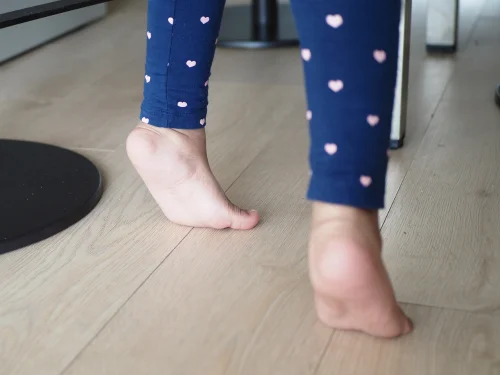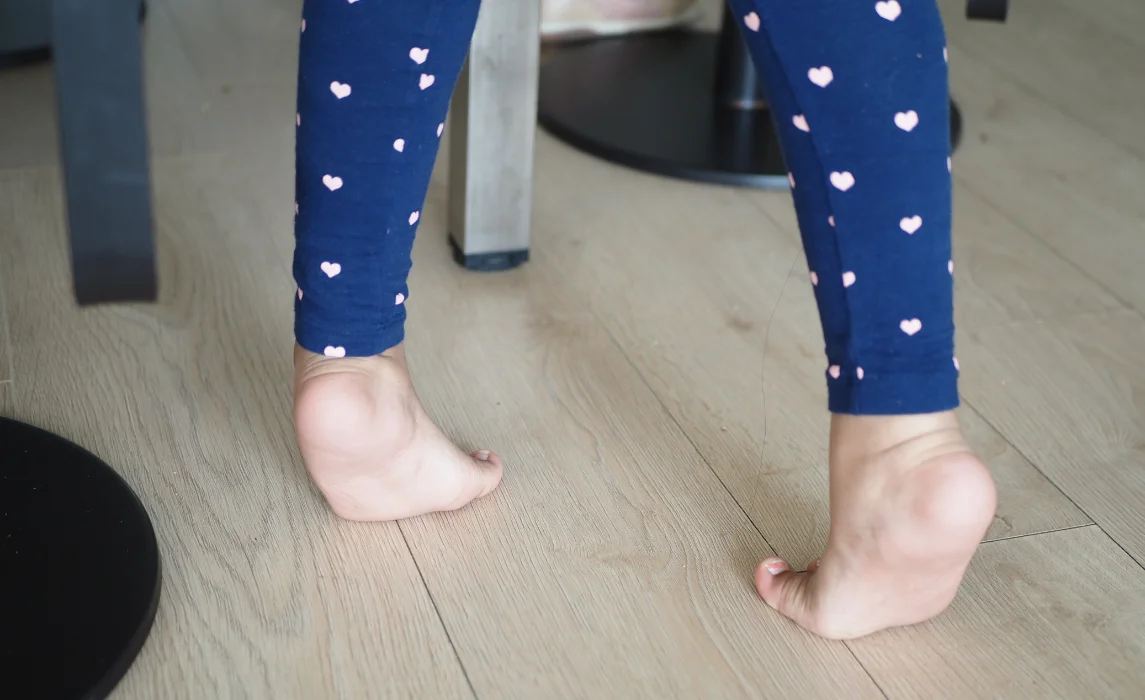Why Do Kids Walk on Their Toes? Causes, Concerns, and Treatments

Yes—finger plays, clapping games, and dance routines that use hand gestures all help. Combine rhythm and repetition for deeper learning.
Send home simple activity ideas, kits, or worksheets. Offer short instructions and encourage family involvement. Regular practice builds lasting progress.
Try origami, sticker scenes, stringing pasta, or painting with Q-tips. Crafts that use small pieces build precision and control.
Toe walking is when a child walks on their tiptoes or the balls of their feet without letting their heels touch the ground. This is very common in toddlers who are just learning to walk. Most kids outgrow it by age 2 or 3.
If toe walking continues beyond those early years, it may be more than just a habit. Sometimes, it can point to tight muscles, sensory challenges, or even a medical condition.
Why Do Children Walk on Their Toes?

There are several reasons why a child might walk on their toes:
1. Idiopathic Toe Walking (Habit)
Some kids walk on their toes out of habit, even though nothing is medically wrong. This is called idiopathic toe walking. While many children grow out of it, staying on the toes for too long can cause calf tightness and discomfort later on.
2. Tight Muscles or Short Tendons
If the calf muscles or Achilles tendon (the cord at the back of the ankle) are too tight, the heel can’t easily touch the ground. This makes toe walking the easier option for a child.
3. Sensory Processing Differences
Some children walk on their toes because of the way their brain processes sensory information. Walking on the toes changes how the feet feel against the floor. Kids who don’t like the sensation of flat feet on the ground may tiptoe instead. Others may toe walk to get extra pressure and input through their legs and feet.
4. Neurological or Developmental Conditions
Toe walking can sometimes be linked to conditions such as:
- Cerebral palsy – muscle stiffness or spasticity can pull the heels up.
- Muscular dystrophy – weak muscles may change walking patterns over time.
- Autism spectrum disorder (ASD) – some children with autism toe walk due to sensory or motor differences.
5. Other Physical Conditions
Heel pain, flat feet, or low muscle tone (hypotonia) can also cause a child to walk on their toes.
When Should Parents Be Concerned?
.webp)
Occasional toe walking in toddlers is normal. But you should talk to a doctor or pediatric therapist if:
- Your child still toe walks most of the time after age 2–3.
- They can’t put their heels down even if asked.
- They have very tight calves or stiff ankles.
- Toe walking comes with delayed motor skills, frequent tripping, or coordination problems.
Early attention can prevent long-term issues like joint stiffness, muscle shortening, or problems with balance and posture.
Possible Complications of Toe Walking
.webp)
If toe walking goes untreated, it may lead to:
- Tight calf muscles and shortened Achilles tendon
- Difficulty jumping, squatting, or running
- Foot shape changes from uneven pressure
- Back, hip, or knee pain as the child grows
- Teasing from peers, which may affect confidence
You May Also Like: How to Get Kids to Eat Vegetables: 7 Practical Tips That Work
How Is Toe Walking Treated?
.webp)
Treatment depends on the cause:
- Stretching and exercises – help loosen calf muscles and improve ankle movement.
- Physical therapy – strengthens muscles, improves balance, and retrains walking patterns.
- Braces or orthotics – special shoes or inserts can encourage heel contact.
- Sensory therapy – helps children with sensory challenges feel more comfortable walking flat-footed.
- Medical care – for neurological or muscular conditions, treatment plans may include ongoing therapy or, in rare cases, surgery.
You May Also Like: 51+ Fine Motor Skills Examples: What They Are and Why They Matter
Final Thoughts
.webp)
Toe walking is common in little kids who are just figuring out how to move. Most will outgrow it naturally. But if it continues past early childhood, it’s important to get it checked. Early support from a doctor or pediatric therapist can make a big difference, helping your child move with confidence and avoid future problems.
You May Also Like: Helping Your Angry Child: A Parent's Guide in Dealing With Outbursts




